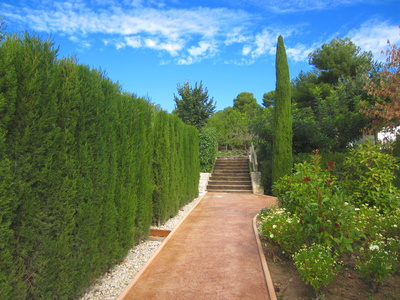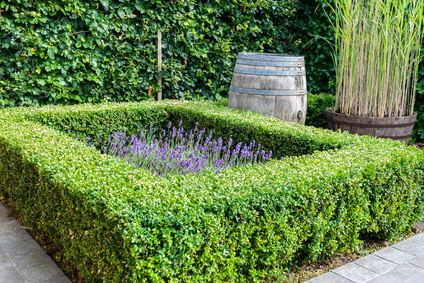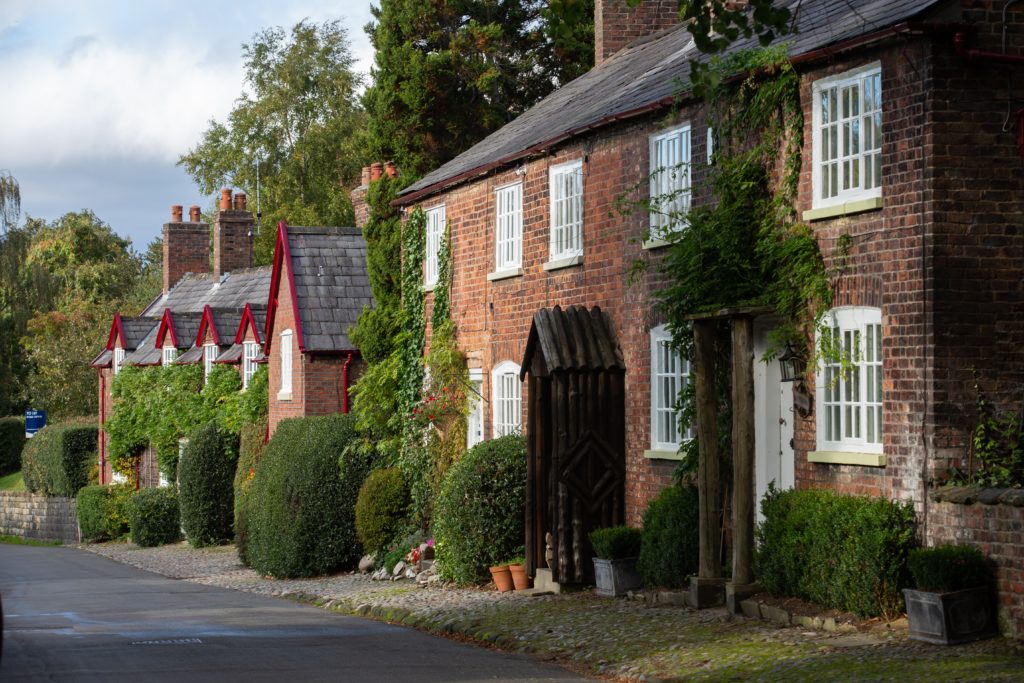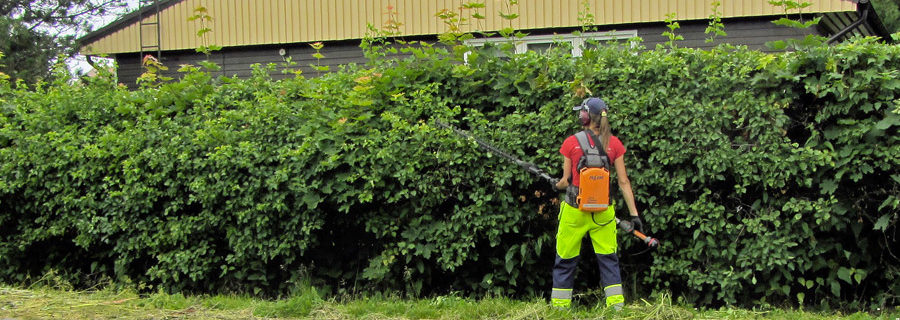Top 10 Hedge Trimming Tips
Hedge trimming may appear to be quite a task, but by following a few expert tips you’ll be able to tackle the job safely, efficiently and with results that will have neighbours and passers-by stopping to admire your handiwork.
Whether your hedge is formal or informal, deciduous or evergreen, short or tall, the following advice should prove extremely useful to you if you are embarking on trimming it.



1. Use the right tools
If your hedge is small then you can get away with using hand-held hedge shears. However, if you have a larger hedge, then you’re going to benefit from using a trimmer powered by petrol or electric.
For broad-leaved hedges such as laurel or bay, you are best advised to use hand shears or secateurs. Conifer hedges tend to respond better when trimmed by good quality, well-maintained power trimmers.
2. Be safe
Proceed with safety in mind whenever using a power trimmer. Wear gloves and safety goggles throughout.
Never use any power tools above shoulder height, and make sure your ladders or platforms are stable.
3. Ensure tools are sharp and clean
Whatever tools you use for hedge trimming, take care to ensure they are sharp and well lubricated. Blades that are not sharp enough will result in snagging and tearing of the leaves.
Dirty blades will never work efficiently. As you trim a hedge, sap accumulates on the blades. This sets hard like glue, so it’s vital to use a solvent cleaner to keep your hedge trimmer blades in optimum condition.

Whatever tools you use for hedge trimming, take care to ensure they are sharp and well lubricated.
4. Wait for a dry day
Hedge trimming is more efficient and definitely safer when carried out on a dry day. Be aware of slip hazards during or following rainy spells, and refrain from using power tools in wet weather.
5. Check for nesting birds
It is an offence under the Wildlife and Countryside Act 1981 to damage or destroy nests of any wild birds whilst they are being built or are in use. So be sure to check for nests before you go ahead with your hedge trimming. The bird nesting season in the UK runs from February to August, although birds may sometimes nest outside of this period, so always check year round just in case.
6. Get the timing right
It is vital to get the timing right when trimming a hedge.
Experts across the board advise trimming a hedge at least once a year, if not more often. Yearly trimming promotes denseness which makes a hedge look healthy and vibrant. It is also good for wildlife habitats.
Summer is generally the best time for hedge trimming, although you should always check the optimum time for your particular species.
Conifer hedges are best trimmed during the summer, but never after August, as this can encourage the development of bare patches. Never cut back beyond the green growth of conifer hedges as it will not regrow.
Yew hedges can be safely trimmed into early autumn but try not to go beyond September.
Cherry laurel and box hedges generally need two to three cuts per year. Start in late spring and finish in autumn. If you have a holly hedge then a single late summer cut will be sufficient. Hornbeam and beech also need just a single cut in late summer. Hawthorn hedges often need two cuts, one in summer and another in autumn. Privet hedges need a lot more pruning, often three to four cuts per year from spring through to autumn to keep them nice and dense.
You can check the individual optimum pruning time for most species via our tree ID pages.
7. Use a cutting template
If you want to ensure an even, symmetrical hedge, tie a string between two canes and run it along the top of the hedge to act as a guide to work to.
To help shape the top of your hedge into an arch for example, cut out a template from plywood or cardboard. Place it on the hedge and follow it as you cut.
If you are using shears, you can keep the top of the hedge level by keeping the blades of the shears parallel to the line of the hedge. If you are using a power trimmer, keep the blade parallel to the hedge and move in a wide, sweeping action. Work from the bottom of the hedge upwards. This way the foliage that you are trimming away will fall neatly away from the hedge.
8. Make it wider at ground level
Gardening mogul Monty Don and many other experts agree that hedges should be trimmed so that they are wider at the ground than they are at the top.
Monty says, “If you cut it dead straight, the plant will have more sunlight at the top, therefore it will grow stronger and the bottom will become weaker, and what you end up with is bare stems at the end of the plant.”
A formal hedge will ideally be slightly tapered on both sides so that light can get to the bottom.

Hedges should be trimmed so that they are wider at the ground than they are at the top.
9. Stay within the law
If you own or manage a countryside hedgerow then you’ll have to ascertain whether it is protected before you proceed with any work.
If it is protected then an application will need to be made to carry out any sort of work on it. To learn more visit the protection and management of countryside hedgerows web page.
10. Care for your hedge
Certain species of hedge plant can be prone to fungal diseases which are exacerbated by wet, airless conditions. Always brush excess clippings away from your hedge and collect clippings that have fallen around the base. If you can, place a plastic sheet under the hedge to collect the clippings as they fall to make it easier to dispose of them.
Hedges generally respond well to feeding as well as regular watering. Fertilise during the spring and then mulch with garden compost to keep weeds under control, to help retain moisture and to improve the structure of the soil.
Expert Hedge Trimming from TH Trees Ltd
At TH Trees Ltd we have been specialising in hedge trimming Essex wide for more than 15 years. We offer a value-added service that you can totally depend upon; one that is widely trusted and recommended throughout Essex and that is Trading Standards and local authority approved and carried out in line with British Standards.
For a no-obligation quotation and helpful advice from a qualified Essex hedge trimming specialist, call TH Trees Ltd on 01268 642 814.
Had a fallen tree in the early hours of Monday morning, called for quote and the team had it cleared on the same day. Really good communication when the lads were onsite and did a great job. Lots of pride in their work shown with the thorough clear up. Would thoroughly recommend.
Thank you Stuart for your kind review. We were glad to be able to help you with your fallen tree. If there's anything else you need in the future, please don't hesitate to get in touch.







